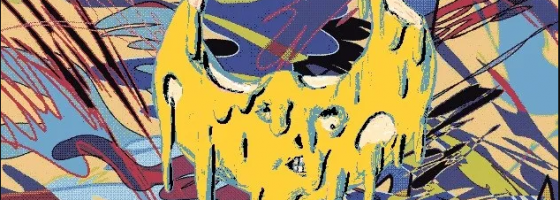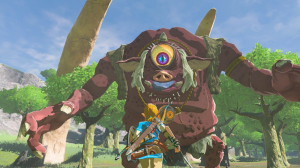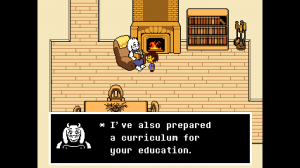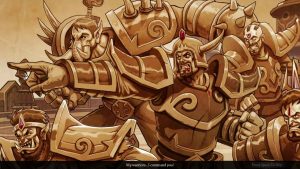Recently I had a chance to play through Yooka-Laylee: A game pitched, designed, and executed as a throwback to 90’s 3D platforming. The game wasn’t bad, but it didn’t do anything to stand out in terms of design. With how hit-driven game development is, does playing it safe not work anymore?
The Hits Keep On Coming:
The last decade of the game industry stood out as the time where video games broke through the pop culture bubble. Franchises like Grand Theft Auto, Uncharted, and Metal Gear Solid pushed the AAA industry towards more cinematic experiences.
As game design became more standardized among releases and genres, it freed developers to either focus more on storytelling, or make gameplay changes to differentiate themselves. Gameplay-focused developers like Nintendo and Valve began to experiment and branch out with games like Super Mario Galaxy and Portal.
Part and parcel to the increased costs and power of the AAA side, we have seen some of the most amazing-looking (and expensive) titles released in the last eight years — Red Dead Redemption 2 will probably break records for its development cost once they’ve been revealed.
Both the recent Assassin’s Creed games and Horizon Zero Dawn were incredible to look at. We haven’t even mentioned mobile yet; with developers earning huge amounts of money using established monetization tactics and branding.
With all that money being put into AAA releases, it does beg the cynical question: Why are so many AAA games largely the same?
The AAA Arms Race:
Trying to answer that question takes us to the heart of the hit-driven focus of the industry. With each console cycle (and sometimes within the same one), we see the trends push developers to focus on a single design or style. There was the mascot platformer era, the open world sandbox, survival horror, FPS, choose your own path RPG, and it looks like we’re entering the Battle Royale phase.
We’ve talked about this before, but major studios like to work with established genres and brands due to the safety net they provide in the market. Why develop an untested design, when you can at least try to guarantee sales with a multiplayer shooter, or open world game, and etc.
The X factor of these titles is that each studio tries to put a unique spin on their respective entry — This could be from an aesthetic or gameplay point of view. However, that doesn’t change the fact that if you’re not a fan of what’s hot at the moment, then the AAA market will hold no value to you.
Experimental Indie:
When AAA games aren’t delivering, it’s up to the Indie space to deliver, and they most certainly have. Over the last eight years, some of the most touching, innovative, and unique games I’ve played have come from indie teams.
The indie market has always gotten by on focusing on unique experiences as opposed to refined ones. When I play a title that was sent to me from and indie developer, I know not to expect AAA graphics and that there may be some bugs.
What’s interesting is how Indie development has grown over this decade in terms of the technology and options available. Thanks to engines like Unity and Unreal, it is possible for smaller teams to go for higher production values in their games while still making a unique experience. Some of the more popular indie teams have game resumes that rival AAA studios in terms of quality and praise.
The bar is always being raised higher and higher, and that puts everyone in an awkward position.
What about the Middle?
Right now as you’re reading this, there are most like likely at least 20 games being released across every platform combined this day. We’ve been talking about how smaller indie games are not standing out anymore, and the days of releasing a game with a simple gameplay loop will not get much attention.
As the line between indie and major studios continues to blur, what about games that aren’t meant to make waves? Going back to Yooka-Laylee, it came out in the year of Super Mario Odyssey and A Hat in Time — Two very different 3D platformers with different focuses on design. Playing YL, nothing in the game was bad, but there wasn’t anything holding my interest either.
Right now, a lot of metroidvania fans are waiting for Bloodstained Ritual of the Night, and early footage of the game looked okay; not amazing, but just okay. I’m hoping that Bloodstained is not going to be a bad game considering the pedigree behind it, but with that said it raises one big question: Is “okay” good enough in today’s market?
A Dime a Dozen:
As I sit here typing this part, I have over 1,500 steam games in my library, several hundred on GOG, and a few hundred more in terms of retail games. Obviously, I’m not your normal consumer, but every day it gets harder to focus on a single title, let alone 20.
These days, I don’t care about Call of Duties, Battlefields, Assassin’s Creeds, or any AAA franchise that follows the same formula each new game. In the past, bad games were quickly forgotten in light of better games coming out, but I feel that we’re now seeing average games befalling the same fate.
Genres like shmups or simple platformers, where you don’t see a lot of evolving the design are often cited in reviews as being “too short” or “gets repetitive.” Given how game sites love to talk about the big name titles, it creates a market always looking for the next innovative thing.
Chasing that Dream Game:
We have talked about this many times before: the indie space has grown tremendously thanks to developers being able to work on their dream games. I have spoken to indie developers over the years that were more than happy to spend three years or more working on a single title if it means making their one-of-a-kind game.
We’ve seen game journalists and youtubers/streamers play those wacky games, and all it can take is one big influencer to notice your game to make it start selling. On the other hand, what happens if it doesn’t? I’ve talked many times before about the risks of doubling down and putting everything into a single title.
Just because something is unique, doesn’t mean it’s going to sell, and yes, I know that contradicts the earlier part of this post. A game being too similar to everything will not be able to stand out; just as a game that stands out too much may not be accessible to consumers. Getting the balance right between uniqueness and refinement is way too big to talk about in this already lengthy post.
Standing Out:
It continues to be hard for new games to stand out in both the AAA and indie spaces. With established names in both areas continuing to put out successful products, it remains to be seen where things stand for new developers wanting to make their first game. In a world of massive franchises and unique hits, figuring out where your game fits in is an important first step.





